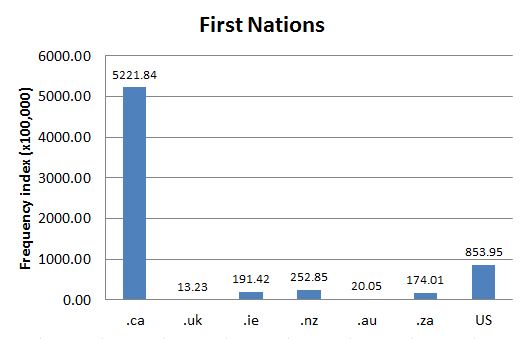DCHP-2
First Nation First Nations, first nations, FN DCHP-2 (October 2016)
n. — usually plural, Ethnicities, Politics
an Aboriginal people of Canada that are neither Inuit nor Métis.
Type: 1. Origin — According to the AANDC, "the Canadian constitution recognizes three groups of Aboriginal people: Indians (commonly referred to as First Nations), Métis and Inuit" (see AANDC reference). The collective term First Nation was coined in the late 1970s to replace the term Indian, which in Canada is now viewed by some as derogatory, though it remains an official designation that is quite widely used. First Nations describes those Aboriginal communities engaged in government-to-government relations with the Canadian government through and beyond the terms of the Indian Act and is thus indicative of political status. This term First Nations is overwhelmingly used in Canada, though no longer exclusively so (see Chart 1).
See also Gage-5, s.v. "First Nation", which is marked "Cdn.", ITP Nelson, s.v. "First Nation", which is described as used in Canada, COD-2 marks it "Cdn", and OED-3, s.v. "First Nation", which is marked as "Canad.", AHD-5, s.v. "First Nation", which is marked as "Canadian".See also: Indian (meaning 1a) Indian Act registered Indian treaty Indian Inuit Assembly of First Nations FN First Peoples (First People) numbered treaty Native Canadian (meaning 1) Aboriginal First Nations language indigenous
- The term exists in the singular, but is overwhelmingly used in the plural.
References:
- AANDC "Aboriginal Peoples and Communities" Accessed 4 Sep. 2013
- AHD-5
- COD-2
- Gage-5
- ITP Nelson
- OED-3
Images:
Chart 1: Internet Domain Search, 8 Aug. 2012
